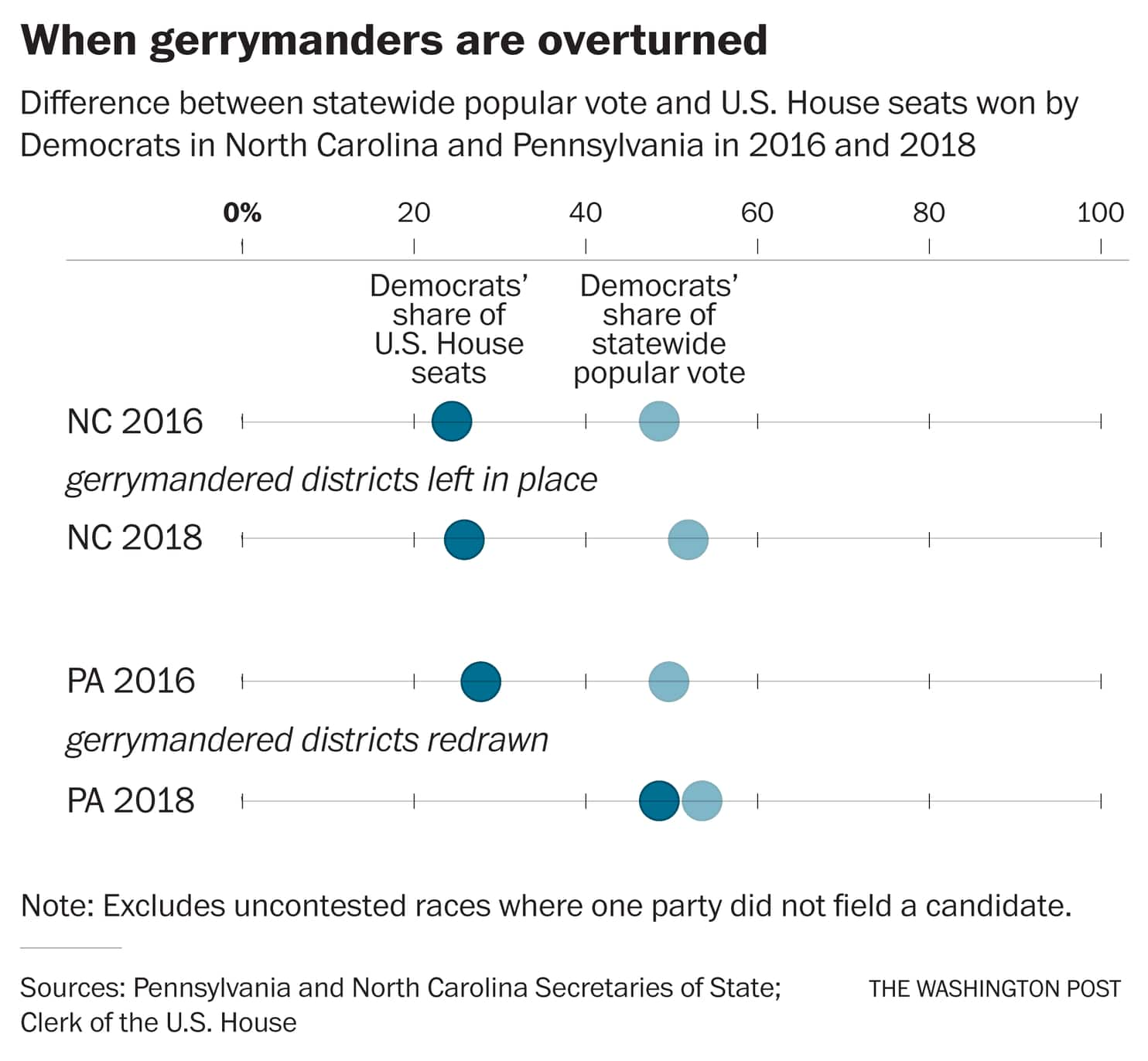Gerrymandering is not going away any time soon. It will just be used in different manner, a manner in which to achieve congressional districts with a fairer representation of the district’s constituency. Why won’t gerrymandering go away? The districts are too big at an average of 700,000 people per district. This is the result of Congress freezing the number of Congressional Representatives at 435 in 1929 and reapportioning the districts of each state based upon population every 10 years. The inequality of this methodology can be seen in a comparison between Wyoming with its one Congressional Representative and it population of 586,000 as compared to California and its average size of 700,000 for each Congressional District. If the average was set at
Topics:
run75441 considers the following as important: gerrymandering, Hot Topics, law, North Carolina, Pennslyvannia, politics, run75441
This could be interesting, too:
Robert Skidelsky writes Lord Skidelsky to ask His Majesty’s Government what is their policy with regard to the Ukraine war following the new policy of the government of the United States of America.
NewDealdemocrat writes JOLTS revisions from Yesterday’s Report
Joel Eissenberg writes No Invading Allies Act
Ken Melvin writes A Developed Taste
Gerrymandering is not going away any time soon. It will just be used in different manner, a manner in which to achieve congressional districts with a fairer representation of the district’s constituency.
Why won’t gerrymandering go away? The districts are too big at an average of 700,000 people per district. This is the result of Congress freezing the number of Congressional Representatives at 435 in 1929 and reapportioning the districts of each state based upon population every 10 years. The inequality of this methodology can be seen in a comparison between Wyoming with its one Congressional Representative and it population of 586,000 as compared to California and its average size of 700,000 for each Congressional District. If the average was set at 586,000 people per district as Wyoming has, then California would gain 15 more Congressional Representatives.
 The Washington Post has an article up on the impact of both unfair gerrymandering and a fairer version of gerrymandering as dictated by the court The later achieves a much fairer split of the districts meant to represent the makeup of the population within the state and their political interests as discovered through national elections.” One state fixed its gerrymandered districts, the other did not.“
The Washington Post has an article up on the impact of both unfair gerrymandering and a fairer version of gerrymandering as dictated by the court The later achieves a much fairer split of the districts meant to represent the makeup of the population within the state and their political interests as discovered through national elections.” One state fixed its gerrymandered districts, the other did not.“
The picture depicts the change in numbers of Republicans and Democrats elected to office as determined by the Congressional districts make up. Pennsylvania had its districts redrawn by the court and “a 53 percent majority in the popular vote yielded a hair under half of the contested seats for Democrats — a big difference from 2016, when 48 percent of the vote gave Democrats 27 percent of the seats.”
In North Carolina, the districts were not redrawn. “The old maps were still in place and a electoral result in 2018 was identical to that of 2016. Despite a Democratic wave in which more than half the state’s voters opted for a Democratic House candidate, Democrats won one-quarter of the contested seats.”
Michigan passed Proposal 2 which established a civilian board to redraw the boundaries of the Congressional districts. I suspect it will still have issues as it will be selected by the legislature.
